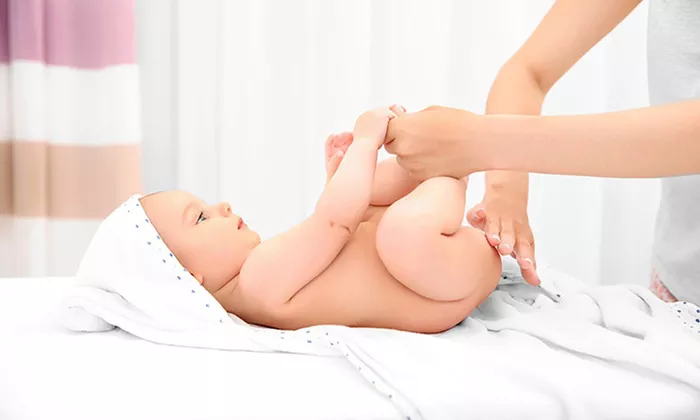Diaper rash is a very common skin problem that affects many babies worldwide. It happens when the skin in the diaper area becomes red, sore, or irritated. This can cause discomfort and fussiness in babies, making diaper changes and daily care more challenging. Understanding what causes diaper rash and how to prevent and treat it is important for every parent or caregiver to ensure the baby’s comfort and skin health.
Causes of Diaper Rash
Wetness and Prolonged Exposure to Moisture
The most common cause of diaper rash is prolonged exposure to urine and stool. When a diaper is not changed frequently enough, moisture stays in contact with the baby’s delicate skin. This moisture softens the skin and makes it more prone to irritation and breakdown.
Friction and Chafing
Friction between the diaper and the baby’s skin can also cause irritation. Tight or rough diapers can rub against the skin, especially when the baby moves, causing redness and soreness.
Allergic Reactions and Sensitivities
Some babies are sensitive or allergic to certain diaper materials, wipes, soaps, or even diaper rash creams themselves. These allergic reactions can cause redness, itching, and rash.
Infections: Yeast and Bacterial Growth
The warm, moist environment inside a diaper is perfect for yeast and bacteria to grow. If the skin is already irritated, these infections can develop and worsen the rash, sometimes requiring medical treatment.
What Is Diaper Rash Cream?
Purpose and Function
Diaper rash cream is a specially formulated ointment or paste designed to protect and heal the baby’s skin. It forms a barrier that keeps moisture away from the skin, reducing irritation caused by urine and stool. Many creams also contain ingredients that soothe redness and help repair damaged skin.
Common Ingredients
Zinc oxide is the most common active ingredient in diaper rash creams. It creates a thick, protective layer on the skin. Other ingredients include petrolatum, mineral oil, natural oils, and butters that moisturize and protect without causing irritation.
Is Diaper Rash Cream Necessary?
Prevention of Diaper Rash
Using diaper rash cream regularly is highly recommended as a preventive measure. Applying a thin layer of cream at every diaper change can protect the skin from moisture and friction, two main causes of diaper rash. This is especially important for babies with sensitive skin or those who are prone to rashes.
Treatment of Existing Rash
If a rash appears, diaper rash cream can help soothe the skin and speed up healing. Ingredients like zinc oxide reduce redness and protect the skin from further irritation.
Comfort and Well-being
Babies with diaper rash often feel uncomfortable and may cry more during diaper changes. Using cream helps reduce discomfort and keeps the baby calm and happy.
When to Use Diaper Rash Cream
Routine Use at Every Diaper Change
For babies with sensitive skin or frequent rashes, applying cream at every diaper change is a good habit. This consistent protection helps prevent rashes before they start.
At the First Sign of Redness or Irritation
As soon as you notice any redness or irritation, apply diaper rash cream to stop the rash from worsening. Early treatment is more effective and prevents complications.
Before Long Periods Without Diaper Changes
Apply a thick layer of cream before bedtime or long naps to protect the skin overnight when diaper changes are less frequent.
How to Choose the Right Diaper Rash Cream
Check the Ingredients
Look for creams that contain zinc oxide, petrolatum, mineral oil, or natural oils and butters. These ingredients provide a strong protective barrier and help heal the skin.
Avoid Harsh Chemicals
Steer clear of creams with fragrances, dyes, or other harsh chemicals that can irritate your baby’s skin further.
Consider Texture and Ease of Use
The cream should be thick enough to protect the skin but easy to apply and remove during diaper changes.
Proper Application of Diaper Rash Cream
Step 1: Frequent Diaper Changes
Change diapers as soon as they are wet or soiled to minimize skin exposure to irritants.
Step 2: Gentle Cleaning
Clean the diaper area gently with warm water. Avoid soaps or wipes with alcohol or fragrance, which can irritate the skin.
Step 3: Dry the Skin Thoroughly
Pat the skin dry completely before applying cream to ensure the barrier works effectively.
Step 4: Apply Cream Generously
Apply a generous but gentle layer of cream over the entire diaper area, especially on red or irritated spots.
Step 5: Use a Clean Diaper
Put on a fresh diaper and dress your baby comfortably to avoid additional friction.
Additional Tips to Prevent Diaper Rash
Frequent Diaper Changes
Changing diapers often keeps the skin dry and reduces the risk of rash.
Diaper-Free Time
Allow your baby some time without a diaper daily. This helps the skin breathe and heal.
Use Breathable Diapers
Choose diapers that allow air circulation and fit well to reduce friction and moisture buildup.
Natural Remedies
Some parents find that applying a small amount of breast milk can soothe mild irritation, though this should be done carefully and only for minor rashes.
When to Consult a Doctor
Signs of Severe Rash or Infection
If the rash does not improve after a few days of home care or worsens, see a doctor. Signs to watch for include blisters, open sores, pus, fever, or extreme discomfort in your baby.
Medical Treatments
Sometimes, diaper rash may require prescription creams such as antifungal or antibiotic ointments to clear infections.
Conclusion
Diaper rash cream plays a vital role in protecting and healing your baby’s delicate skin. It is both a preventive and treatment tool that helps reduce discomfort and promotes faster healing. Using the right cream, applying it properly, and maintaining good diaper hygiene are key steps to keeping your baby’s skin healthy and rash-free. Always monitor your baby’s skin condition and seek medical advice if the rash persists or worsens.
Related topics:


